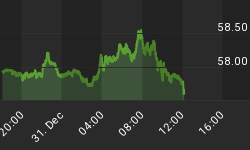Learn ways to spot trading opportunities using wave analysis and other technical analysis methods
Senior Analyst Jeffrey Kennedy is the editor of our Elliott Wave Junctures and one of our most popular instructors. Jeffrey's primary analytical method is the Elliott Wave Principle, but he also uses several other technical tools to supplement his analysis.
In this trading lesson, Jeffrey demonstrates how to determine when an Elliott wave trade setup becomes a trade.
You can apply these methods across any market and timeframe.
Lesson 1: Ready, Aim ... Fire: Knowing When to Place a Trade
A very important question you need to answer if you are going to use the Wave Principle to identify high-confidence trade setups is, "When does a wave count become a trade?"
To answer this question, let me draw upon the steps required to fire a firearm:
Step 1 (Ready) -- Hold the rifle or pistol still...very still.
Step 2 (Aim) -- Focus and align your sights.
Step 3 (Fire) -- Pull the trigger without tensing your hand.
If you follow these steps, you should at least hit what you're aiming at, and, with a little practice, you should hit the target's bull's-eye more often than not.
As an Elliottician and a trader, I employ a similar three-step approach to decide when to place a trade. Figure 1 shows a schematic diagram of a five-wave advance followed by a three-wave decline -- let's call it a Zigzag. The picture these waves illustrate is what I call the Ready stage.

In Figure 2, prices are moving upward as indicated by the arrow. At this stage, I begin to aim as I watch price action to see if it will confirm my wave count by moving in the direction determined by my labeling.

Once prices do indeed begin to confirm my wave count, I then determine the price level at which I will pull the trigger and Fire (that is, initiate a trade). And, as you can see in Figure 3, that level is the extreme of wave B.

Why do I wait for the extreme of wave B of a Zigzag to give way before initiating a position? Simple. By waiting, I allow the market time to either prove or disprove my wave count. Moreover, once the extreme of wave B is exceeded, it leaves behind a three-wave decline from the previous extreme.
As you probably know, three-wave moves are corrections, according to the Wave Principle, and as such, are destined to be more than fully retraced once complete. An additional bonus of this approach is that it allows me to easily and confidently determine an initial protective stop, the extreme of wave C.
Remember, all markets have a wave count; however, not all wave counts offer a trading opportunity. So the next time you think you have a wave count, rather than just blindly jumping in, first steady yourself, wait while you aim, and then -- if price action does indeed confirm your wave count -- pull the trigger.
Also, it is important to note that this is my way of applying the Wave Principle practically, but it's by no means the only way.

If you are ready for more lessons on how to become a more successful technical trader, get Jeffrey Kennedy's free report, 6 Lessons to Help You Spot Trading Opportunities in Any Market.
Jeffrey has taught thousands how to improve their trading through his online courses, his international speaking engagements, and in his trader education service Elliott Wave Junctures.
This free report includes 6 different lessons that you can apply to your charts immediately. Learn how to spot and act on trading opportunities in the markets you follow, starting now!
Access Your Free Report Now >>
This article was syndicated by Elliott Wave International and was originally published under the headline How to Find Trading Opportunities in ANY Market. EWI is the world's largest market forecasting firm. Its staff of full-time analysts led by Chartered Market Technician Robert Prechter provides 24-hour-a-day market analysis to institutional and private investors around the world.
















